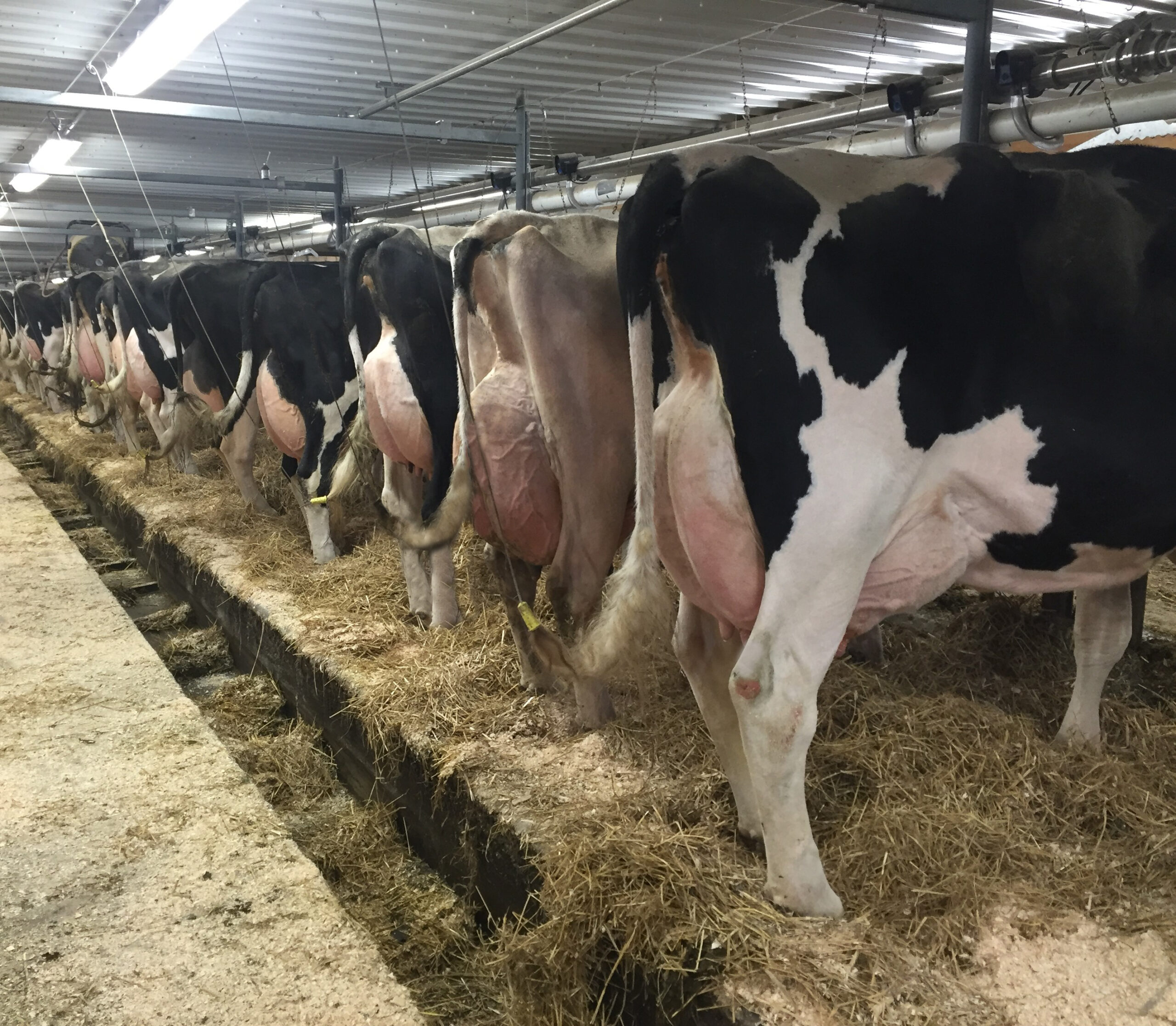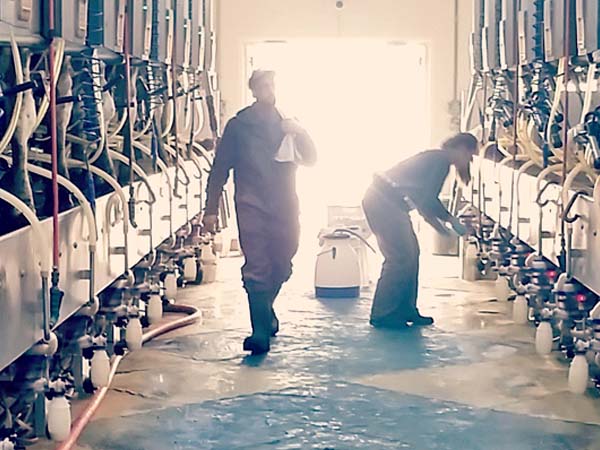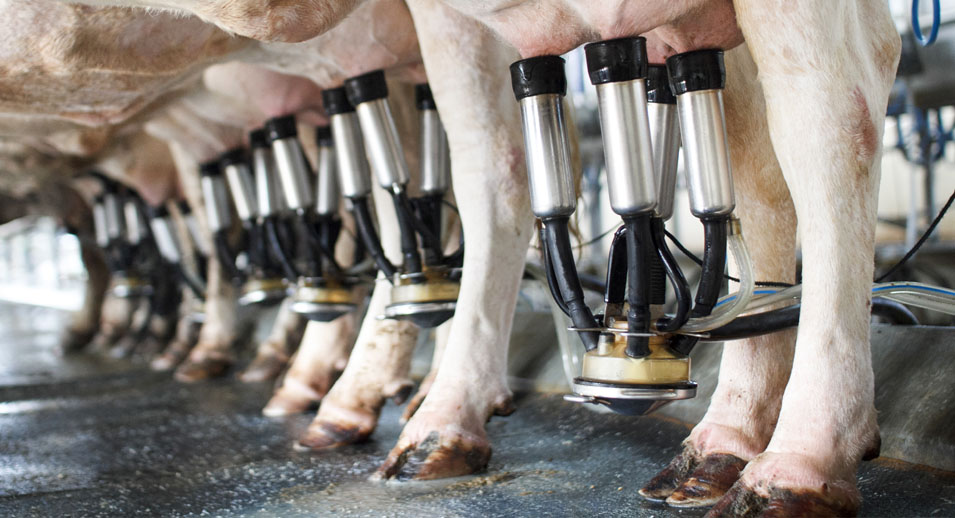A Cow’s Circadian Rhythm
- April 23, 2021
Cows have both a circadian rhythm and a seasonal rhythm. In general, the circadian rhythm is a biological process that is defined over a 24-hour period and that alternate between awaken and sleeping phases. For cows, their daily circadian cycles control several physiological functions and help them to anticipate changes in their environment.
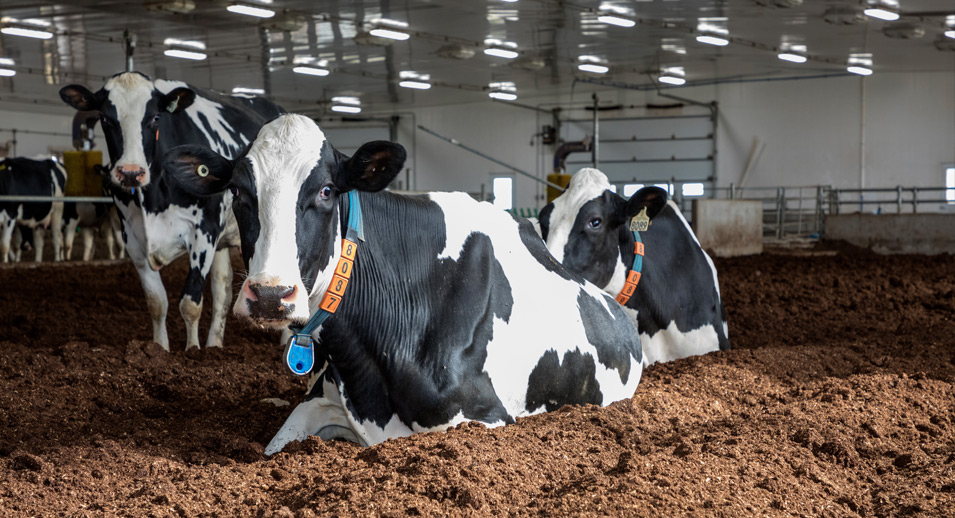
Can the circadian rhythm influence milk production?
A recent study (Salfer et al. Bri. J. Nutr. 2020) was carried out to try to explain the circadian rhythm for variations in milk and component yield, according to the time of day that TMRs are fed. These were the study parameters:
- Number of subjects: 16 cows
- Duration: 17 days
- Characteristics: 4 milkings/day for 7 days
- Groups:
- 1 group with TMR from 7AM to 11PM (DRF-Day Restricted Feeding)
- 1 group with TMR from 7 PM to 11AM (NRF-Night Restricted Feeding)
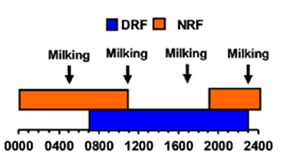
There was a difference observed between the peak dry matter (DM) intake of the two groups, depending on whether the cows had access to their TMR during the day, or at night. The following graph shows that the highest blue and orange points correspond to the moment when the TMR was fed to the cows (kg DM consumption/hour).

The change in the time at which the cows had access to the TMR, gave rise to a shift in milk yield and composition.
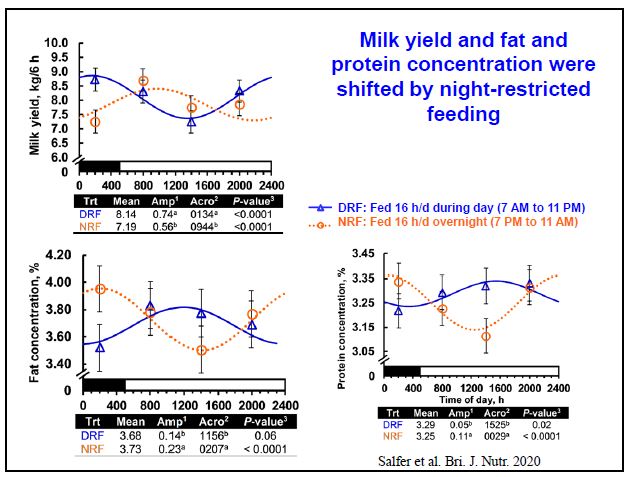
According to the results of this study, the time of day of feeding influenced the yield and composition of milk at the time of milking.
What does this mean for milk recording with robot milking systems?
Given that each of cows consume their concentrates and TMR at different times, this could have a significant impact on fat and protein levels.
Here is a list of factors to consider:
- Number of hours that feed is available at night:
- Is the feed accessible to the cows (feed pushed in)?
- What is the total forage DM consumption?
- Light intensity: according to the most recent information from Steve Adam, Dairy Production Expert in Comfort and Welfare at Lactanet, cows should not be exposed to more than 35-50 lux at night (security light) so that there is a clear difference between night and day. This light intensity is considered the same as being in the dark (8 hours/day), regardless of the type of housing. Exposure to a greater intensity of light during the 8-hour dark cycle can influence a cow’s circadian rhythm.
- Milking time of day for dominant vs. dominated cows: Dominated cows will tend to eat and be milked in less crowded time of day which could have an impact on their fat test.
- Space at the feed bunk: the available space at the feed bunk has even more impact! Regardless of the milking system, it is important to respect the ideal 24 inches per head at the feed bunk in free stall housing (even for robots).
- Sampling time: It is important to consider the time of day that the feedings take place when sampling occurs.
- Ration uniformity from one feeding to the next: Try to have uniform and homogenous rations at all time; this could be more difficult with round bales.
- Thermal stress: When a cow experiences thermal stress, she will eat more at night than during the day, which will influence circadian rhythm.
Could feeding time vs. robot autosampler start-up time, influence components more than we thought?
The study results clearly explain the observations of recent years. In addition, remember that Lactanet technicians recommend starting the samplers around 10 a.m. in order to have more representative fat tests; the importance of the variation seen on the fat test is quite surprising.





